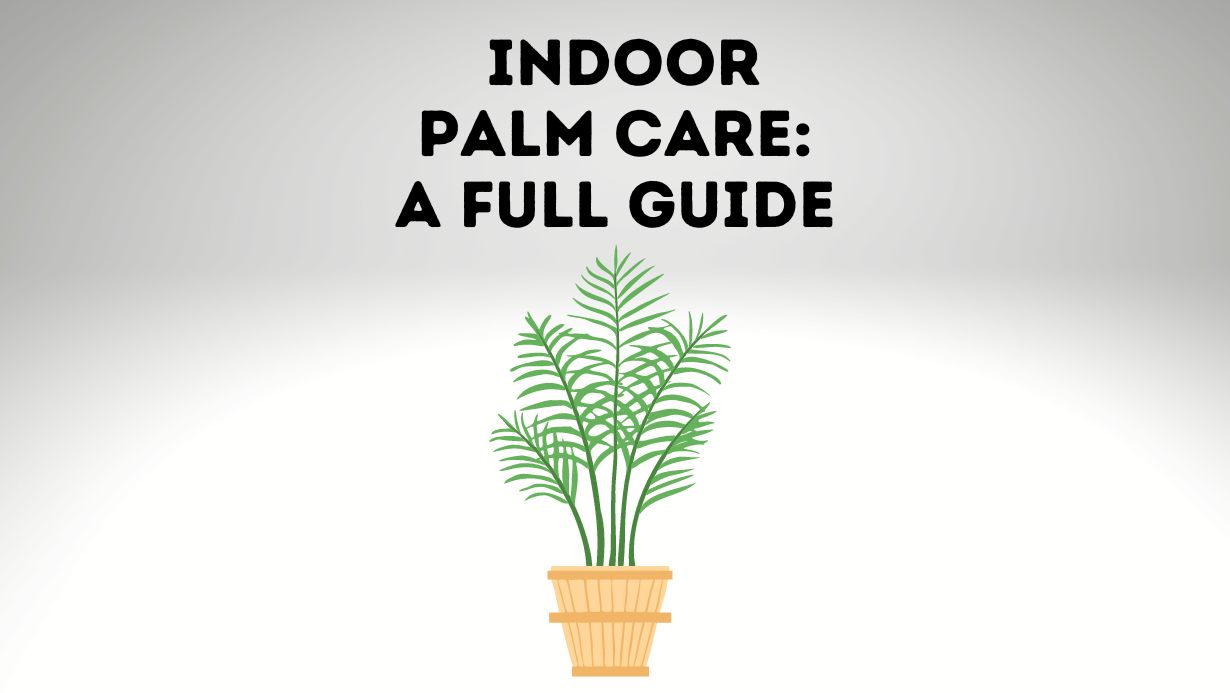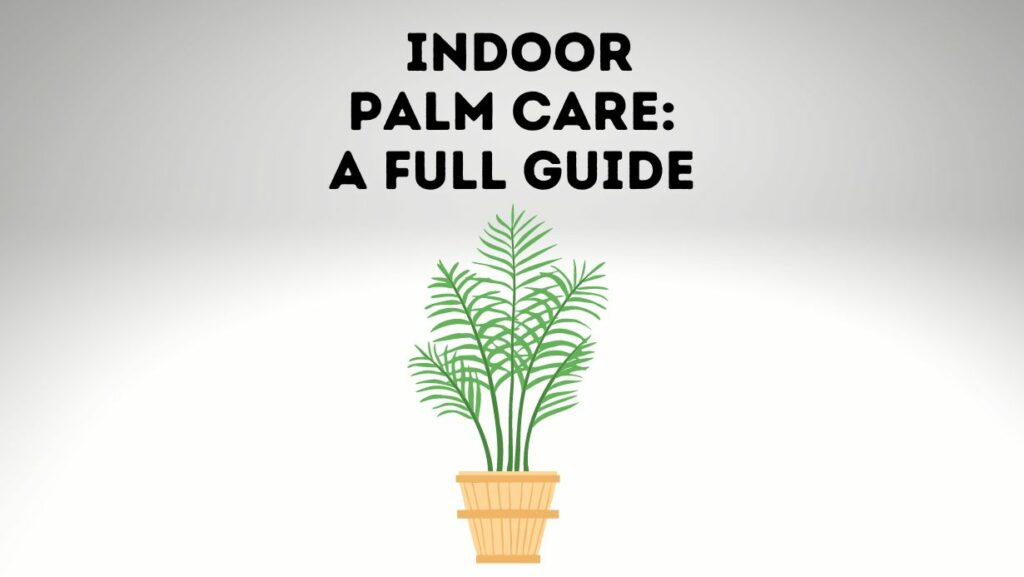
As an Amazon Affiliate, We Earn From Qualifying Sales. Read Full Disclosure Here
Palms are one of the most popular houseplants. They are easy to take care of and add a touch of tropical flair to any home. But even though they are easy to care for, there are still some things you need to do to make sure your palm stays healthy and happy. In this blog post, we will go over everything you need to know about palm plant care. We will cover watering, lighting, temperature, soil, and more. By the end of this post, you will be an expert on palm plant care and ready to keep your own palm healthy and thriving.
Soil and Fertilizer Requirements
When it comes to palm trees, the type of soil you plant them in is important. They prefer well-drained, sandy soil that is high in organic matter. If your soil is heavy or clay-like, you can improve it by adding sand and organic matter.
When it comes to fertilizer, palms are not heavy feeders. In fact, too much fertilizer can actually damage them. A light application of a balanced fertilizer (one that contains nitrogen, phosphorus, and potassium) every six months is all they need.
Watering Your Palm Plant
Palm plants are drought tolerant, so they don’t need a lot of water. In fact, too much water can be harmful to your palm plant. Water your palm plant only when the top inch of soil is dry. To water your palm plant, use lukewarm water and let it drip slowly onto the soil. Avoid getting water on the leaves, as this can cause brown spots. Allow the excess water to drain away from the pot before putting it back in its place.

Pruning Your Palm Plant
Pruning is an important part of palm plant care. It helps to control the size and shape of the plant, and can also help to remove diseased or damaged leaves. Pruning also encourages new growth, which can help to keep your palm plant looking healthy and vibrant.
When pruning your palm plant, it is important to use sharp, clean tools. This will help to prevent damage to the plant’s leaves, and will also make it easier to get a clean cut. Make sure to remove any dead or dying leaves, as well as any leaves that are damaged or diseased. You should also trim back any branches that are growing out of control.
If you are not sure how to prune your palm plant, it is best to consult with a professional before starting. They will be able to give you specific instructions on how to properly care for your plant.
Transplanting Your Palm Plant
If you’re thinking about transplanting your palm plant, there are a few things you should keep in mind. First, palms don’t like to be disturbed, so it’s best to wait until the plant is pot-bound before transplanting. Second, choose a well-draining pot that’s large enough to accommodate the root ball. And finally, water the palm deeply after transplanting and keep the soil moist but not soggy.
Common Pests and Diseases of Palm Plants
There are several common pests and diseases that can affect palm plants. These include scale, mealybugs, whiteflies, spider mites, and aphids.
Scale insects are small, hard-bodied creatures that suck the sap from plant leaves. They can be found on the undersides of leaves or on stems. Mealybugs are soft-bodied insects that also suck sap from plants. They are covered with a white, powdery substance. Whiteflies are small white insects that fly around and feed on the sap of plants. Spider mites are tiny spider-like creatures that spin webs and feed on plant leaves. Aphids are small, soft-bodied insects that suck sap from plants.
How Do I Care For An Indoor Palm Plant?
Indoor palm plants are a beautiful addition to any home, and with proper care, they can thrive for years. Here are some tips on how to care for your indoor palm plant:
Light: Palm plants prefer bright, indirect sunlight. If you can provide a spot near a south- or west-facing window, that would be ideal. If your plant is not getting enough light, it will start to yellow and the leaves will droop.
Water: Allow the top inch or so of soil to dry out before watering again. Water thoroughly, until water runs out of the drainage holes at the bottom of the pot. Palms are susceptible to root rot, so it’s important not to overwater them.
Fertilizer: Feed your palm plant every two weeks during the growing season (spring and summer) with a balanced fertilizer diluted to half strength. During the fall and winter months, fertilize monthly.
Pruning: Remove any dead or yellowed leaves as needed. If your plant becomes too large for its pot, you can trim back the roots and foliage as needed.
With proper care, your indoor palm plant will thrive and bring a touch of the tropics to your home for many years to come.
Does Palm Plant Need Sunlight?
Yes, palm plants need sunlight but when indirect to grow. Without enough sunlight, they will become leggy and their leaves will yellow. They should be grown in an area that receives full sun to partial shade.
How Often Do You Water Palms?
Watering your palm plants is essential to their health, but how often you water them will depend on a few factors. The type of palm plant, the size of the plant, the potting mix, and the weather all play a role in how often you need to water your plants.
If you live in a warm climate, you will likely need to water your palms more often than if you live in a cooler climate. In general, you should water your palms once a week. However, during hotter months, you may need to water them twice a week or even every other day.
The type of palm plant also matters. Some palm plants are more drought-tolerant than others and can go longer without being watered. If you’re not sure how often to water your specific type of palm plant, check the tag that came with the plant or ask someone at your local nursery.
The size of the palm plant also plays a role in how often it needs to be watered. Smaller palm plants will need to be watered more frequently than larger ones. This is because they have a smaller root system and can’t hold onto as much water.
Eventually, the potting mix you use can also affect how often you need to water your palms. A potting mix that is high in organic matter will hold onto moisture better than one that is mostly sand or perlite. This means that you won’t have to water your palms as often if you use
Can Palm Trees Grow Indoors?
While most palm trees are tropical and prefer warm, humid conditions, there are a few species that can tolerate cooler temperatures and even grow indoors. If you’re interested in adding a palm tree to your indoor space, research which species is best suited for your home’s environment.
4 Indoor Plam Trees to Grow
The Areca Palm (Dypsis lutescens) is a popular choice for indoor growers because it is tolerant of low light conditions and doesn’t require much humidity. It’s also one of the smaller palm species, so it can be easily accommodated in most homes.
The Bamboo Palm (Chamaedorea seifrizii) is another good option for indoor growth. It prefers bright, indirect sunlight but can tolerate lower light levels as well. This palm is also relatively small, making it a good choice for small spaces.
The Parlour Palm (Chamaedorea elegans) is another small palm that does well indoors. It prefers moderate light levels and high humidity, so it’s a good choice for bathrooms or other moist areas of the home.
Finally, the Lady Palm (Rhapis excelsa) is a large palm that can grow up to 10 feet tall. It does best in bright, indirect sunlight but can tolerate lower light levels as well. This palm is perfect for larger homes or office spaces.
How Long Do Indoor Palm Trees Last?
Indoor palm trees are a popular choice for homeowners who want to add a touch of the tropics to their décor. But how long do indoor palm trees last?
The answer to this question depends on several factors, including the type of palm tree you have, the level of care it receives, and the conditions in your home. With proper care, most indoor palm trees will last for several years. However, some types of palms are more susceptible to disease and pests than others, and may not last as long.
To ensure that your indoor palm tree has a long and healthy life, follow these tips:
-Choose the right type of palm tree for your home. If you live in an area with high humidity, opt for a dwarf palmetto or pygmy date palm. If your home is on the dry side, go for a king sago or majesty palm.
-Provide adequate light. Most indoor palm trees need bright, indirect sunlight to thrive. If your home doesn’t get much natural light, consider using grow lights to provide the needed illumination.
-Water regularly. Palm trees like their soil to be moist but not soggy. Water when the top inch of soil feels dry to the touch.
-Fertilize monthly during the growing season (spring and summer). Use a fertilizer made specifically for palms or another tropical plant. Follow the package directions carefully so you don’t overdo it.
Why Is My Indoor Palm Plant Dying?
If your indoor palm plant is dying, it might be because of one of the following reasons: improper watering, inadequate light, too much fertilizer, or pests.
Improper Watering
One of the most common reasons why indoor palm plants die is improper watering. When watering your palm plant, make sure to use room-temperature water and avoid overwatering. Allow the top soil to dry out in between waterings.
Inadequate Light
Another common reason for an indoor palm plant’s demise is inadequate light. Palm plants need bright, indirect sunlight to thrive. If your plant isn’t getting enough light, it will start to yellow and eventually die. Move it to a brighter spot in your home or office.
Too Much Fertilizer
Giving your palm plant too much fertilizer can also kill it. When fertilizing, always follow the directions on the packaging and don’t overdo it. Too much fertilizer can burn the roots of your plant and cause its leaves to turn brown and fall off.
Conclusion
Palms are one of the most popular houseplants and it’s no wonder why. They’re easy to take care of and can thrive in a variety of conditions. With a little love and attention, your palm plant will be a beautiful addition to your home for years to come. Thanks for reading and good luck with your palm plant care!

